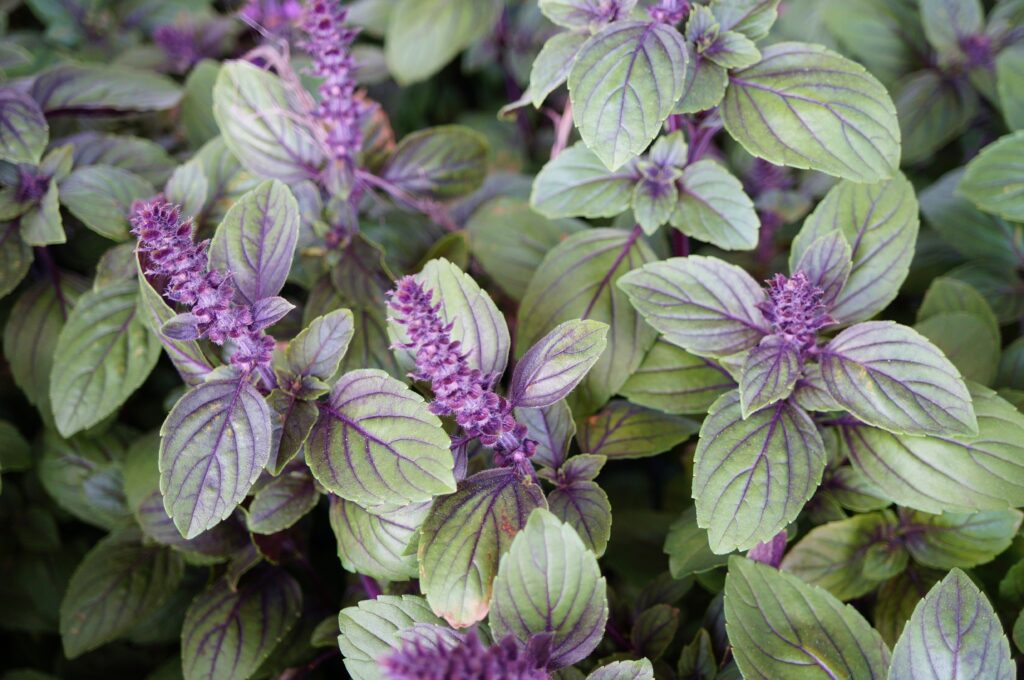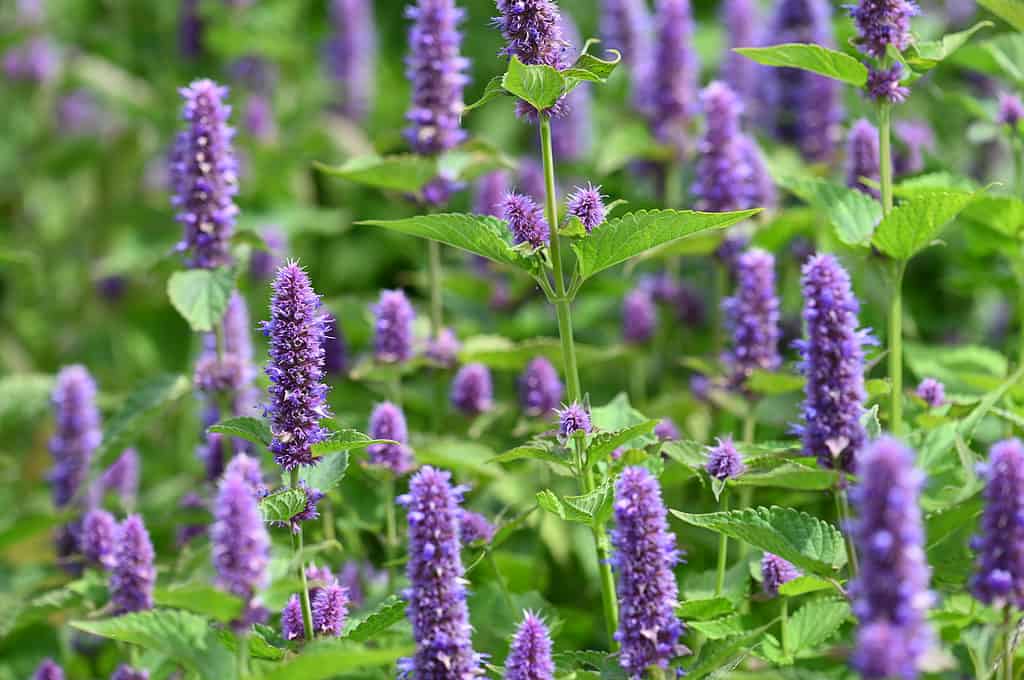16 Plants That Look Like Lavender And How to Care For Each
Lavender, with its delicate purple blooms and soothing fragrance, has long been a favorite in gardens and homes around the world. However, numerous plants resemble lavender and even offer their unique charm and benefits. Discover 16 plants that look like lavender along with insights into how to care for each one.
1. African Blue Basil (Ocimum kilimandscharicum × basilicum)

©EQRoy/Shutterstock.com
African blue basil is a delightful herb that bears a striking resemblance to lavender, both in its appearance and fragrance. It produces slender, elongated leaves, which are tinted with a deep green and often display a subtle purplish hue. This distinctive coloration creates an attractive contrast that closely mimics the visual appeal of lavender.
As the wind rustles through its foliage, it also releases a captivating, sweet fragrance that evokes the familiar scent of traditional basil, yet with delicate notes reminiscent of lavender. This unique blend of visual and aromatic similarities makes African blue basil a captivating lavender look-alike for your garden.
African blue basil is not only a visual delight but also a resilient and versatile herb in the garden. It thrives in full sun, so choose a well-lit spot in your garden or on your balcony. It also grows best in well-draining soil, so ensure good drainage to prevent waterlogged roots.
Keep the soil consistently moist but not waterlogged. Additionally, regular pruning encourages bushier growth and prevents legginess. Pinch off the tips of the branches regularly to promote branching, and feel free to harvest the aromatic leaves frequently, as doing so will encourage more growth and maintain the plant’s shape.
2. Anise Hyssop (Agastache foeniculum)

©iStock.com/BethAmber
Another captivating herb, anise hyssop, also shares several visual similarities with lavender while boasting its unique qualities. This herb features slender, lance-shaped leaves that are a vibrant green and occasionally tinged with hints of purple. Its tall, upright spikes of small, tubular flowers add a touch of elegance to your garden, resembling lavender blooms in their structure and arrangement.
Anise hyssop is not only visually appealing but also emits a delightful fragrance, reminiscent of anise or licorice, which sets it apart from traditional lavender. It grows best in full sun but can tolerate partial shade. It also loves well-draining soil and prefers drier conditions.
Water moderately and regularly deadhead spent flowers to encourage continuous blooming and maintain a neat appearance. You can also harvest the leaves and flowers for culinary or herbal use, which also helps the plant to produce new growth. Anise hyssop is generally hardy but may benefit from a layer of mulch in colder climates to protect its roots from frost.









